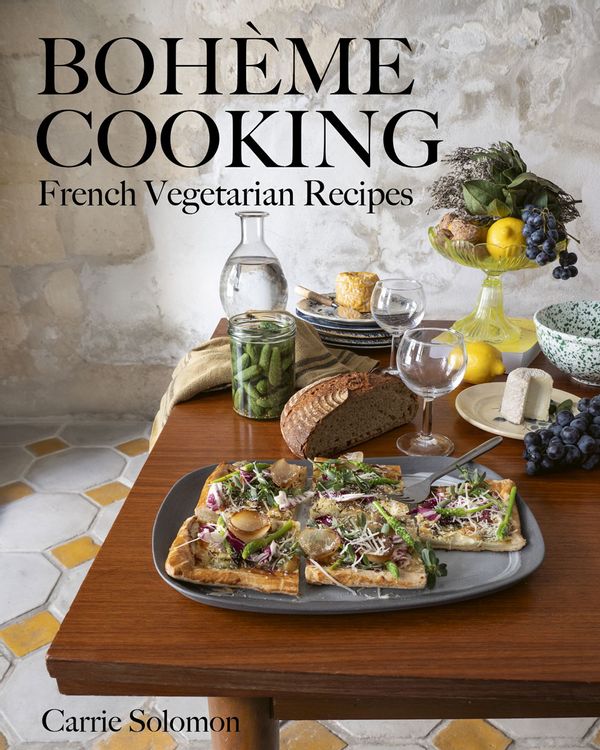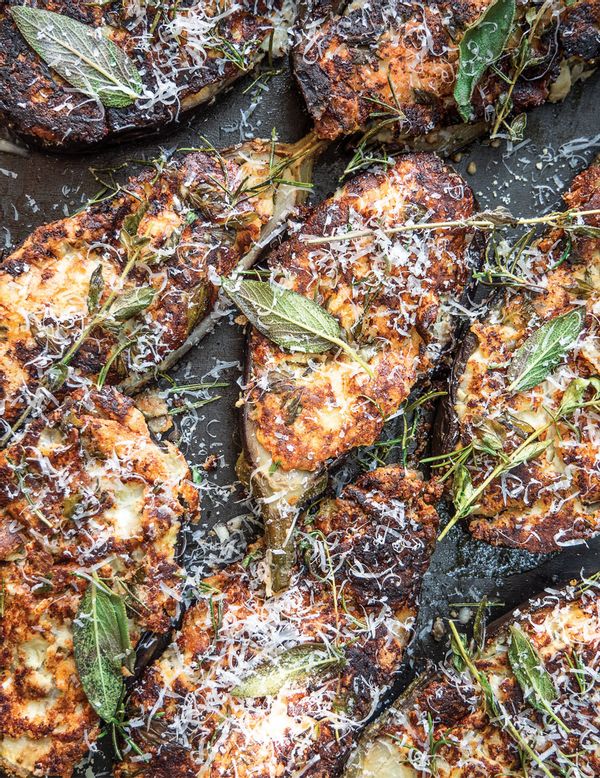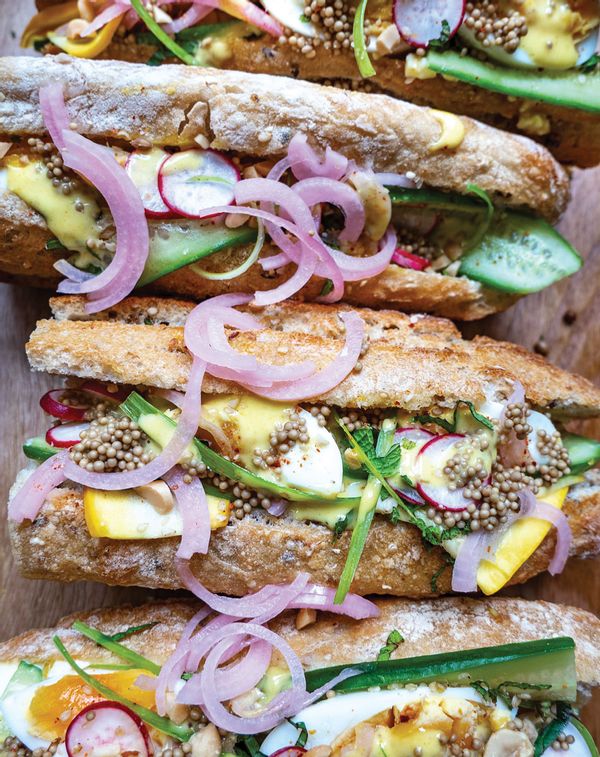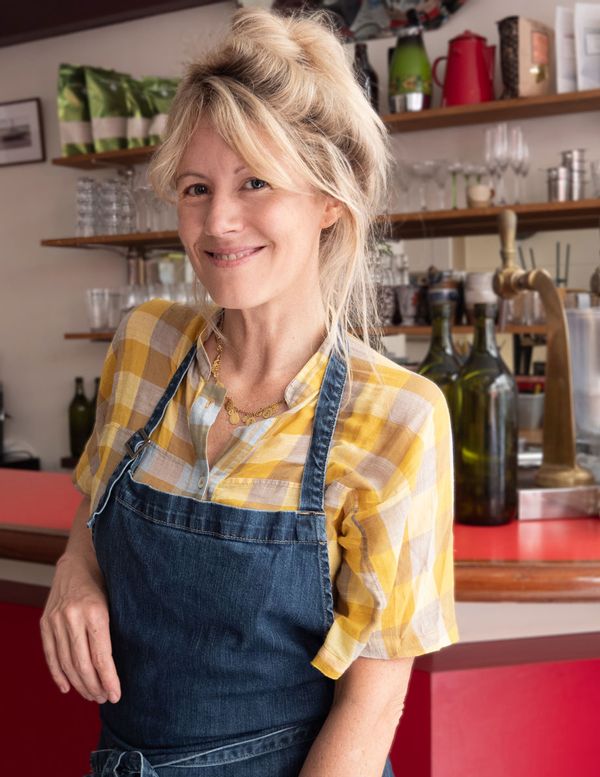
For many, French cuisine is typified by indulgence, richness and a certain nose-in-the-air type of stuffiness.
Expensive bistros, hifalutin food and immensely heavy, cream-and-butter-laden dishes, with cheeses and wines galore to round out meals (when I wrote this, I admittedly pictured Kenan Thompson's "Pierre Escargot" circa "All That.")
Now, while there is certainly lots of dairy and wine, French food is done a disservice when it's looked at through this lens — oftentimes by Americans unaware of all of the nuances and intricacies inherent in the country's food.
Carrie Solomon, an expat by-way-of-Michigan who has lived in Paris for the past 20 years, explains to Salon Food what "Boheme cooking" means to her, what Americans actually get wrong about the classic cuisine, dispelling these preconceived notions and much more.
The following interview has been lightly edited for clarity and length.

For those who automatically ascribe rich, heavy, butter-and-cream dense flavors to French food — which, yes, is somewhat true in certain cases — how would you dispel that notion?
Yes, it is true, but when you use the good stuff, you need less of it.
I often cook with whole milk, so I need less cream and butter. And of course, when you’re cooking without meat, you’re already avoiding all of the [saturated] fat especially present in beef and pork.
And as vegetables are naturally virtuous, it does make sense to occasionally serve a richer condiment with them: It’s all about balance in the end. Especially when those richer condiments or sauces are homemade, I find that I use less of them.
Take my aioli recipe for example: It’s so flavorful, and yes it’s dense, but I think you’re likely to use less of it than you would an industrial mayonnaise. Not to mention that it uses a whole egg, making it less calorie-dense than a classic mayonnaise recipe and it also comes together with an immersion blender in just minutes.
Is there a lot of vegetarian cuisine in classic French cuisine? Or is there usually an animal protein in most instances?
Already, classic French cuisine has evolved a lot over the past twenty years, but even before then — when perhaps main dishes did include more meat, there were always the starters and side dishes that were very vegetable-focused.
Do you have a favorite recipe in the book?
Buckwheat galettes are probably the recipe I find goes the furthest — if you make one recipe from the book, make this one — because you’ll actually get two (maybe even three!). You can make a savory crêpe with egg, cheese and asparagus and you can also make oven-baked buckwheat chips.
The latter often graces my kitchen counter at apéro hour — with so much flavor and crunch, they are better than chips and the best vessel for all sorts of dips, whether tapenade or seasonal tartinades. I have even layered them up to make a quick millefeuille dessert with chantilly and fresh fruit.
What stands out for you as a formative moment that got you into cooking or food at large?
My first restaurant job when I was 14: My friend's mom was the pastry chef at what was then the coolest restaurant in town. For a Midwest restaurant at the time, it was by far ahead of the curve, with European cheeses and many vegetarian options. She got her daughter and I both summer jobs there. I tasted many things for the first time there.
What was the development process of the book like?
I took the development with me in everyday life. As I did most of the photos myself, I didn’t have to organize with a photographer. There are recipes and photos from different pop-ups, my kitchen counter, our family house in the south of France and more.

How did your love of French food influence your career before culminating in this cookbook?
It’s the reason I moved to France! It was for love — love of good food. And it has taken me from cooking for an avant-garde French family when I was 22, to the vegetable garden of Michelin-starred chef Alain Passard, to writing for the food pages of French ELLE, to writing cookbooks for a French editor, cooking and consulting in Paris restaurants and to creating vegetarian menus for French school kids.
So a few years ago, I started to feel that this story and the recipes along the way might be of interest to others.
I know you've lived in France for 20 years. Do you remember, 21-plus years ago, what you had anticipated about the food prior to moving (and now living there for two decades?)
I remember thinking that I could pretty much subsist on baguette, cheese and wine. I knew there was a lot out there to explore — but already the thought that three of my essentials could be had on a student’s budget — I’m not kidding, for 10 euros you really can have all three. And I’m talking about a bottle, not a glass!
How does "brasserie" style cuisine show up in this cookbook?
Two of my go-to brasserie or bistrot plates have always been “oeuf mayo” eggs with mayonnaise and “poireaux vinaigrette” leeks with vinaigrette. They are favorites of mine not just because they are vegetarian, but because they reflect the focus on quality ingredients.
Both are enduring bistrot staples that can be served simply or can be more constructed with additional ingredients, pickles, infused oils, crispy toppings such as toasted hazelnuts, toasted buckwheat groats — I often find myself coming back to buckwheat! It’s such an incredible ingredient texture wise, flavor-wise, [etcetera].

There's an interesting contrast between classic French fare and more imaginative, modern offerings — how would you say the book straddles that line?
I think I gave space to both without really really thinking about it, to be honest. In the past 20 years, both offerings easily occupy menu space here in Paris — that’s something that the French are quite good at, in my opinion. On the same menu, you can have a humble leek vinaigrette next to more elevated truffle-esque offerings.
I read that the book is a "manifesto for Boheme lifestyle" that blends "rustic charm with elegant fare," mirroring your own journey, personally, professionally, and culinarily. Can you talk a bit about that?
I don’t think one ever intentionally writes a manifesto — at least not a bohème manifesto!
I never would have imagined ending up in Paris working as a chef and food writer. It all kind of happened somehow by accident and somewhat not, like much of life, I guess. I always worked restaurant jobs to take me to the next step: As a teenager, those jobs paid for my movie nights; in college, they helped me pay rent and trips to Paris. And once here, they helped me learn French, translating recipes from French ELLE as an au pair.
As a side note — while not the case in the U.S., in France, Elle comes out weekly and includes 4 recipes per week on the last page in a sheet card print-out. Most of my French friends tell me their grandmothers had recipe card boxes in which they saved the recipe cards. So when I started writing those recipes on a biweekly basis for the magazine — the significance and weight as an American writing these recipes for a French public, let’s just say, it wasn’t lost on me.
But to come back to how I feel bohème translates to me these days is a little more nuanced. I didn’t have a dinner table after my divorce. Pre-divorce, we entertained often, big dinner parties, a full table, sometimes me alone in the kitchen wanting so hard to get it right. But then divorce threw that all upside down.
I found myself hosting my girlfriends last minute, our kids making a mess on the living room floor and us huddled around the kitchen counter — and enjoying it. So much more so than those stiff dinners for which I’d cook for hours and not even have time to finish my plate before I’d jump up and head back to the kitchen to prepare the next course.
Now it all happens at an arms reach or around my constellation of coffee tables for what the French call apero - dinatoire.
You were selected to design the menus at the Roland Garros site in Paris for the Olympic Games this coming summer. How cool — congratulations! How did that come about and how have you been preparing for that?
Yes, that’s true! I am still quite awestruck that I have a role to play in this event.

There's reference to sustainability and environmentalism throughout the book, of course, in tandem with the vegetable-forward ethos. How does that influence your cooking at large?
For me, cooking with vegetables is an important decision, the sustainable decision for the future, and one that I feel France, for all of its nose-to-tail ethos, is taking very seriously. School kids now eat twice weekly mandated vegetarian lunches — of which, after some hard nudging from one of my daughters, I’ve participated in some of the recipe development.
As a little side note, in French public schools, you don’t have the option of bringing your own lunch. And aside from severe allergies, everyone eats the same hot lunch, and what always shocks foreigners is the pomp about it. It’s a three, and on some days, even four course affair — starter, main, cheese or yogurt, and then fruit or dessert. And what I find particularly touching in the lower grades is that it’s served communal style!
For those who are spooked about a dearth of animal protein in their meals, how might they interact with (or even enjoy) this book? What's the best way to "adapt," for a particularly carnivorous diner?
I’m not saying that I would want this book to be seen a collection of side dishes for a carnivorous diner, but I do think that vegetable-focused recipes can go much further in terms of texture, acidity and balance. So whether you eat vegetarian or not, I’m hopeful my recipes might broaden some perspectives
What are the top three ingredients a beginner should have on hand if they are looking to get into French food?
A hard cheese for grating — a little bit can go a long way, Buckwheat, whether flour for aperitif snacks, sprinkles of it simply toasted, mountain-style pasta or savory brunch crêpes. Herbs — ideally fresh, but if not, flavorful dried herbs are great, as well.
CORRECTION: The original interview included an error on animal trans fats, which Salon has corrected.







